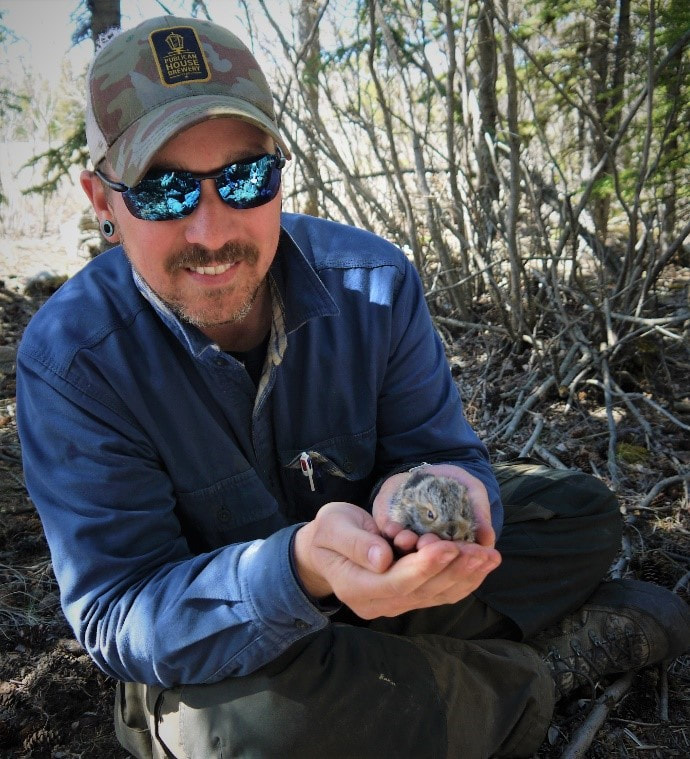Lee Edward SchollThe 8-10 year population cycle of the Snowshoe hare (Lepus americanus) in the Kluane Lake region of Canada’s Yukon Territory has been studied for more than 30 years, and although our understanding of the species and their role on the landscape is significant, there are still characteristics and complexities around cyclic populations not well understood. One way we can improve our insight into this intricate system is through understanding maternal effects during natural cyclic changes and how they may influence juvenile snowshoe hares.
My master's research will explore this idea of maternal effects as a continuance of past research that examined physiological, behavioural, and morphological characteristics of free-ranging female hares (dams) and young (leverets) during the increase phase of 2016. This project will compare data collected during the increase phase (when natural risk is low) to data collected during the decline, 2018 and 2019 (when natural risk is high) to understand how trans-generational maternal effects may influence population demographics of juvenile snowshoe hare. In doing so, we hope to advance our knowledge of temporal variations in maternal effects of snowshoe hares, therefore contributing to our overall understanding of the mechanisms driving cyclic populations. |
Education |
|
Contact:
email: [email protected]
email: [email protected]
